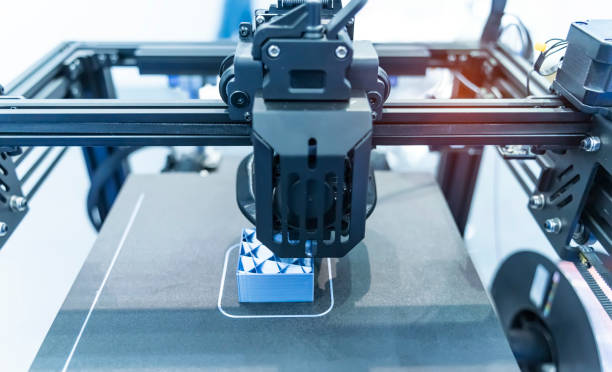In recent years, 3D printing technology has emerged as a transformative force across various industry sectors worldwide. Australia is no exception to this trend, with its industries experiencing a profound revolution thanks to the innovative applications of 3D printing. The capacity for rapid prototyping, customisation, and on-demand production is ushering in a new era of manufacturing efficiency and creativity.
The Impact of 3D Printing Across Sectors
The significance of 3D printing in Australia is evident in its widespread impact across multiple industries. From aerospace to healthcare, and from automotive to construction, the implications are far-reaching. This technology facilitates the production of complex geometries that would otherwise be impossible or too costly to achieve with traditional manufacturing methods. As a result, Australian companies are harnessing the technology to gain competitive advantages both locally and in the global market.
Aerospace and Defence
In the aerospace and defence sectors, 3D printing is proving instrumental in manufacturing lightweight, yet durable components. The technology’s ability to consolidate parts into single assemblies not only reduces weight – crucial for fuel efficiency and payload capacity – but also decreases production times and costs. Moreover, the ease of creating prototypes enables quicker design iterations and innovation.
Healthcare and Medical Devices
Healthcare is another industry where 3D printing is having a significant impact. The technology’s ability to create patient-specific implants and prosthetics tailored to individual anatomies is revolutionising patient care. Furthermore, Australian researchers are at the forefront of bioprinting research, aiming to print living tissues that could eventually lead to organ printing for transplants.
Advancing Innovation with 3D Printers in Australia
The adoption of 3d printers australia is not just about importing machines and technology. It involves cultivating a culture of innovation and supporting an ecosystem that includes software developers, material suppliers, and technical expertise. Australian companies and institutions are investing in education and collaboration with global experts to ensure they remain at the cutting edge of 3D printing technology.
Manufacturing: Customisation and Efficiency
In the manufacturing industry, 3D printing allows for high levels of customisation without the need for expensive tooling. This capability is revolutionising the way products are designed, tested, and produced. Small businesses can create bespoke solutions for niche markets, and larger companies can experiment with new product lines without significant upfront investments.
Education and Workforce Development
Recognising the essential role of skilled labour in the growth of 3D printing, Australia is investing in education and training programmes. Universities and technical institutes are offering courses in additive manufacturing to prepare a workforce adept in the latest technologies. This initiative is ensuring that the country has the home-grown talent necessary to sustain this technological revolution.
Environment and Sustainability
Additionally, 3D printing is aligning with the global emphasis on sustainability. The technology can reduce material waste through additive processes that only use the necessary material to create objects. Australian businesses are embracing this benefit to minimise their environmental footprint, fostering a culture of responsible manufacturing.
Challenges and the Path Forward
Despite the clear advantages of 3D printing, the Australian industry faces challenges in adopting the technology widely. Factors such as the cost of equipment, the need for standardisation, and intellectual property concerns are hurdles that need addressing. However, the continued investment in R&D and collaborative efforts between industry, academia, and government will be crucial in overcoming these obstacles.
International Collaboration and Market Growth
To expand the benefits of 3D printing, Australian industries are engaging in international collaborations. These partnerships are opening doors to new markets and innovations, contributing to the growth of the local 3D printing ecosystem. Global connections also help in sharing best practices and overcoming regulatory barriers across borders.
3D Printing as a Competitive Advantage
By integrating 3D printing into their operations, Australian companies stand to gain a significant competitive advantage. The ability to rapidly develop and produce niche products positions Australia as a leader in custom manufacturing. Additionally, offering unique services such as on-demand production can attract clients who are looking for speed, flexibility, and innovation in product development.
Conclusion
3D printing technology is undoubtedly revolutionising Australian industries, driving innovation, and offering unprecedented opportunities. The strategic adoption of this technology by businesses in various sectors is contributing to a more agile, innovative, and sustainable ecosystem. As the nation continues to invest in and explore the potentials of 3d printers australia, the future of manufacturing and product development looks brighter and more exciting. The journey of transformation has only just begun, with much more to be achieved as 3D printing matures and becomes even more ingrained in everyday business operations across Australia.
3D printing technology is not just changing the way we manufacture and produce goods; it’s shaping the very fabric of Australian industry’s future. Embracing this shift will be key for those looking to stay ahead in an increasingly competitive global landscape. The investment in 3D printing today is an investment in the prosperity of tomorrow’s industry in Australia.



